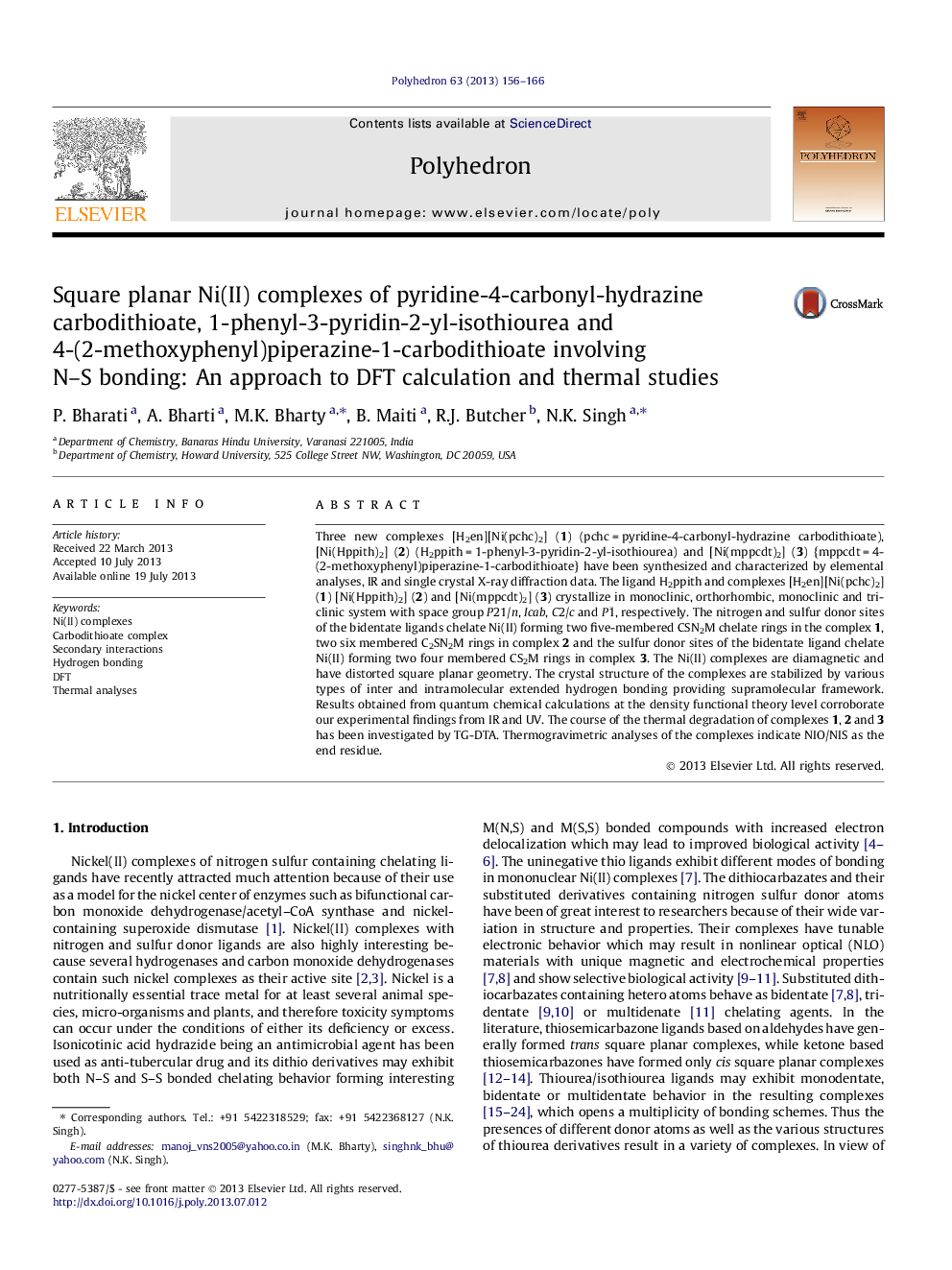| Article ID | Journal | Published Year | Pages | File Type |
|---|---|---|---|---|
| 1335570 | Polyhedron | 2013 | 11 Pages |
Three new complexes [H2en][Ni(pchc)2] (1) (pchc = pyridine-4-carbonyl-hydrazine carbodithioate), [Ni(Hppith)2] (2) (H2ppith = 1-phenyl-3-pyridin-2-yl-isothiourea) and [Ni(mppcdt)2] (3) {mppcdt = 4-(2-methoxyphenyl)piperazine-1-carbodithioate} have been synthesized and characterized by elemental analyses, IR and single crystal X-ray diffraction data. The ligand H2ppith and complexes [H2en][Ni(pchc)2] (1) [Ni(Hppith)2] (2) and [Ni(mppcdt)2] (3) crystallize in monoclinic, orthorhombic, monoclinic and triclinic system with space group P21/n, Icab, C2/c and P1¯, respectively. The nitrogen and sulfur donor sites of the bidentate ligands chelate Ni(II) forming two five-membered CSN2M chelate rings in the complex 1, two six membered C2SN2M rings in complex 2 and the sulfur donor sites of the bidentate ligand chelate Ni(II) forming two four membered CS2M rings in complex 3. The Ni(II) complexes are diamagnetic and have distorted square planar geometry. The crystal structure of the complexes are stabilized by various types of inter and intramolecular extended hydrogen bonding providing supramolecular framework. Results obtained from quantum chemical calculations at the density functional theory level corroborate our experimental findings from IR and UV. The course of the thermal degradation of complexes 1, 2 and 3 has been investigated by TG-DTA. Thermogravimetric analyses of the complexes indicate NIO/NIS as the end residue.
Graphical abstractNew complexes [H2en][Ni(pchc)2] (1), [Ni(Hppith)2] (2) and [Ni(mppcdt)2] (3) have been synthesized and characterized by elemental analyses, IR and single crystal X-ray diffraction data. The nitrogen and sulfur donor sites of the bidentate ligands chelate Ni(II) forming two five-membered CSN2M chelate rings in the complex 1, two six membered C2SN2M rings in complex 2 and the sulfur donor sites of the bidentate ligand chelate Ni(II) forming two four membered CS2M rings in complex 3. The Ni(II) complexes are diamagnetic and have distorted square planar geometry. The crystal structure of the complexes are stabilized by various types of inter and intramolecular extended hydrogen bonding providing supramolecular framework. Results obtained from quantum chemical calculations at the density functional theory level corroborate our experimental findings. The course of the thermal degradation of complexes 1, 2 and 3 has been investigated by TG-DTA. Thermogravimetric analysis of the complexes 1, 2 and 3 show weight loss to give NiO and NiS, respectively.Figure optionsDownload full-size imageDownload as PowerPoint slide
